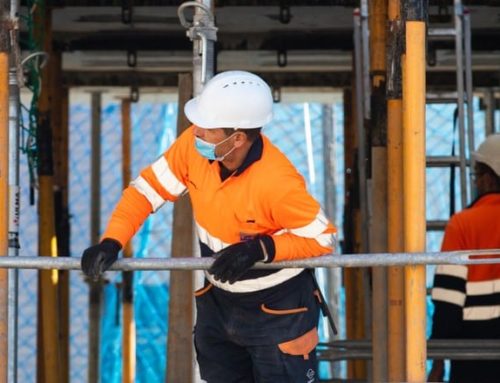Employees Embracing Remote Work Style
The COVID-19 pandemic created a massive switch to remote working across the country and across the globe. While many SoCal construction workers remained onsite as essential workers, others in the industry struggled to find ways to continue to work in a hybrid style. While it may have seemed unimaginable for construction workers to “work from home,” surveys show that not only has it been possible, but workers prefer it.
How is it possible?
Construction will always need laborers in the field for tasks such as operating heavy machinery, doing carpentry and electrical work, or laying bricks. However, the pandemic required construction companies to get creative about reducing the number of people onsite for health safety. A number of employees such as estimators and engineers were allowed a hybrid schedule.
Utilizing technology solutions such as virtual meeting software, job-specific digital libraries, virtual reality, and video walkthroughs enabled construction firms to make remote work options available.
While vaccinations have reduced the risk of contracting COVID, the virus is still lingering and just as contagious as it ever was. Because we’re not yet living in a post-pandemic world, safety still has to be priority number one on jobsites. Thus, companies have continued to adopt a combination of in-person and remote work for field teams.
Welcomed new normal
A survey by construction tech company OpenSpace revealed 52% of respondents said their field teams had never worked remotely before, but today, 92% note they allow occasional or frequent remote work. Despite some challenges, many construction companies have thrived in hybrid setups: 80% say they are just as productive or more productive when working remotely.
Respondents even offered up some of the benefits they are discovering:
- Saving time and money by decreasing travel to and from sites (72%).
- Improving work-life balance (72%).
- Allowing teams access to the best candidates (35%).
- Enabling teams to put their best people on more jobs than would otherwise be possible, likely due to reduced travel times (20%).
Even if driven by necessity, employees pivoted quickly to make remote options work for them. For example, Los Angeles-based contractor AECOM saw up to 90% of its employees shift to hybrid schedules. The bonus came when company leaders realized telework accelerated productivity as workers gained back time formerly used for telecommuting and travel.
“We’ve seen employee engagement that is higher than when people are working in the office,” CEO Michael S. Burke said in an interview. “Our people are enjoying the additional flexibility of working at home.” During the early days of the pandemic, Burke told investors the company experienced only 18 cancellations on its 50,000 projects worldwide. Additionally, AECOM reported a near-record 2020 Q2 new project awards of $8.6 billion and an increase in revenue of $3.2 billion, up 5% from the same time period in 2019.
Employees embrace this work model so much that surveys find people more willing to quit their jobs entirely rather than return to the office. In fact, according to the poll by Morning Consult on behalf of Bloomberg News, nearly half of millennials and Gen Z would look for the exit door.
In an industry already struggling with a historic shortage of skilled labor, companies have to find ways to meet demands, invest in a younger workforce, and keep employees happy and productive. It looks like hybrid work policies may be here to stay even after COVID-19 dissipates.
Stay up-to-date on this and other important infrastructure issues by signing up for the Rebuild SoCal Partnership newsletter. Follow us on Facebook, Twitter and Instagram, and listen to The Rebuild SoCal Zone podcast.






Leave A Comment